Aeronautical Engineering
Career Scope
Aeronautical engineering is one of the most challenging fields of engineering with a wide scope of growth. This discipline specializes in research, design development performance testing, maintenance of commercial and military airplanes, weapon systems. Aeronautical engineers improve flight safety & fuel efficiency, develop control systems, analyse new materials and use advanced technologies to meet customer needs and reduce the environmental impact of air commute.
Prospects after Aeronautical Engineering
- Maintenance of Aircraft – Aerospace Engineers test new aerodynamic and aviation systems, and maintain them.
- Aircraft Designer – Aerospace Engineers specializing in this field deal with designing, analysis, constructing, and testing aircraft.
Job Opportunities
After completing a degree in Aeronautical engineering, you can work in government sectors — with ISRO, HAL, DRDO labs like GTRE, ADA, DRDL and NAL, etc. or in private sectors such as L & T, Godrej Aerospace, Boeing, Airbus, Mahindra, etc. You can also go for Indian Air force and Indian Navy.
Opportunities in private sector
Students Achievements
During Academic Year 2016-2017
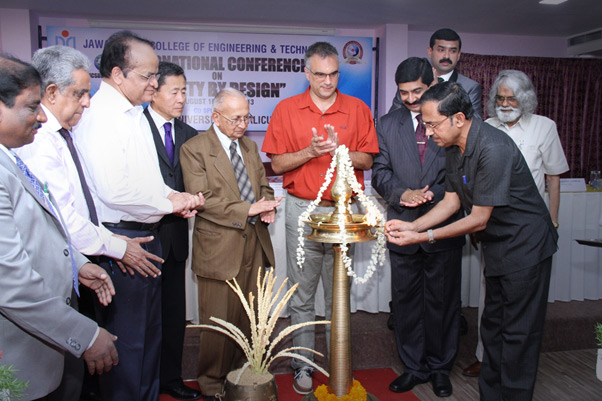
- Final year student Ms. Sreelakshmi S Nair (2013-2017 Batch) qualified in the AFCAT 2, 2016 conducted by Indian Air Force.
- Ms Smruthy Mohan E has got placed, by the placement drive conducted by Accenta training solutions in Nehru College of Engineering and Research Center, Pambady.
- Mr. Nandhu K Biju, a student from 2011-15 batch has joined as a flying officer in Indian Airforce this year.
- Mr. Sarath Kumar, a student from 2011-15 batch has joined as an Analyst engineer in Renault this year.
- Mr. Ajay Pavithran (2013-2017 Batch), advanced into the zonal level competition of the “SPEAK FOR INDIA” competition conducted by Federal Bank and Mathrubhoomi held on November 2016.
“Safety by Design” is a concept and movement that encourages product designers to “design out”health and safety risks during design &development. This concept supports the view that along with quality, programme and cost; operational safety including risk mitigation is realized during the design stage itself.
Concept of safety aspects in design is an intrinsic part of any design project. Nevertheless, this concept ends normally with making design as FAIL PASSIVE, which means, any failure of the part or system should not cause undue catastrophic effects on the overall operation. Traditional methodology adopted towards hazard identification and mitigation often surfaces at a stage when the design process would be in final stages, whereby safety comes as an afterthought.
However in any project critical to human and environmental issues, safety has to be considered as paramount in delivery and operation. Another important characteristic of safety by design is looking at product development in a systemic manner rather than in isolation. This will ascertain that the chain of events due to any small errors, including the effect of built in tolerances, shall not have any adverse effect on the overall fidelity of the product or system.
The above approach peeps into:
- Design Obligations
- Prevention of Hazards through established design standards
- Mitigation methods in case of failures
It also provides designers time to think creatively and develop innovative solutions which can be tested during design reviews. Safe design takes care of:
- Ethical and moral responsibility
- Sustainability
- Best Engineering Practices
- Good Business Sense
- Reduced overall life-cycle cost of products
These concepts have now become part and parcel of Aviation and Automobile designs. To quote an example, concept of Airbags to save human lives or Automatic switching on Turn Lights during turns, that too based on the wheel speed and the turn angle (as found in the new generation cars – XUV for example.)
A glimpse at such conceptual idea was our motive behind this conference.
Facilities
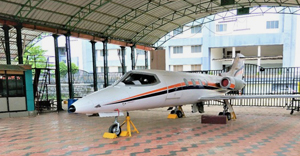
01LEAR JET 25B
The Learjet 25 is an American ten-seat (two crew and eight passengers), twin-engine, high-speed business jet aircraft manufactured by Learjet. It is a stretched version of the Learjet 24. The first Model 25 flew on August 12, 1966, and the first delivery was in November 1967.
Prospects after Aeronautical Engineering
- Crew: Two pilots.
- Capacity: 8 passengers.
- Length: 47 ft 7 in (14.50 m)
- Wingspan: 35 ft 7 in (10.84 m)
- Height: 12 ft 3 in (3.73 m)
- Wing area: 231.77 sqft (21.53 m2)
- Airfoil: NACA 64A109.
- Empty weight: 7,640 lb (3,645 kg)
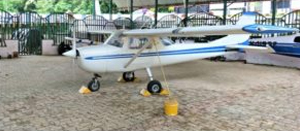
02CESSNA 152
The Cessna 152 is an American two-seat, fixed tricycle gear, general aviation airplane, used primarily for flight training and personal use. It was based on the earlier Cessna 150, including a number of minor design changes and a slightly more powerful engine running on 100LL aviation gasoline.
Specifications
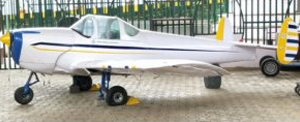
03ERCO Ercoupe
The ERCO Ercoupe is a low-wing monoplane aircraft that was designed and built in the United States. It was first manufactured by the Engineering and Research Corporation (ERCO) shortly before World War II; several other manufacturers continued its production after the war.
Specialties
- Tricycle landing gearwith castering nose wheel, steerable if desired
- Suitable longitudinal and lateral stability with limited up-elevator deflection, to prevent loss of control due to stalling and spinning.
- A glide-control flap
- Two-control operation using controls for pitch and roll.

04Subsonic Wind Tunnel
Majority of experimental data needed in aerodynamics is generated using wind tunnels. Wind Tunnel is a device for producing airflow relative to the body under test. Wind tunnels provide uniform flow conditions in their test section.
Applications of wind tunnels
- Drag Estimation
- Lift calculations
- Flight mechanics analysis
- Stability determination of models
Non-Aero applications in
- Civil Engineering
- Automobile Engineering
- Calibration of instruments
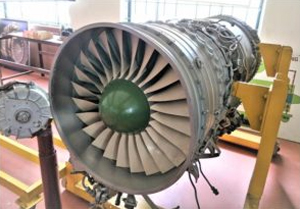
05Jet Engine Bay
A jet engine is a reaction engine discharging a fast-moving jet that generates thrust by jet propulsion. This broad definition includes air breathing jet engines (turbojets, turbofans, ramjets, and pulse jets) and non-air breathing jet engines (such as rocket engines). In general, jet engines are combustion engines
In common parlance, the term jet engine loosely refers to an internal combustion air breathing jet engine. These typically feature a rotating air compressor powered by a turbine, with the leftover power providing thrust via a propelling nozzle — this process is known as the Brayton thermodynamic cycle.
Aeronautical Laboratories
Analysis and Simulation Lab
This Lab enables the students gain a fair knowledge on design, analysis and simulation of aircraft structural parts, and also focuses on the practical learning of the simulation applications of the aircraft parts and sub systems. In addition to this, it helps us in examining the different parameters and factors affecting its performance.
Avionics and Microprocessor Lab
Avionics stands for Aviation Electronics, which deals with electronic components used in various Aircrafts. The avionics and microprocessor laboratory comprises of experiments which deal with digital electronics, microprocessors and MIL-1553B avionics data buses. The Digital Electronics experiments include multiplexer and DE multiplexer, encoder and decoder, comparator, shift registers etc., which helps the students to understand logical expressions that could be implemented using minimum number of logic gates with the help of bread board and digital trainer kit. These experiments provide an ideology of miniaturization of electronic circuits that were used in Aircraft. Microprocessors have numerous applications in avionics including automatic flight control system. The microprocessor programming would help the students to have an idea on simple assembly language programs. The experiment related to Avionics data bus gives a brief idea about data transfer between different subsystems in an Aircraft.
Propulsion Lab
The Propulsion laboratory enables the students to understand the basic concepts and carry out experiments in Aerospace Propulsion. This laboratory provides information about the various engines used in aircraft and its operation conditions. The laboratory gives an idea about the parts and working principle of the various components of aircraft piston and jet engines. The laboratory has facility to calculate the calorific value of aviation fuel. The performance of the aircraft propeller can be estimated using the propeller arrangement. The cascade testing of axial flow compressor and turbine blade row enables the performance estimation of blade row. The heat interactions can be studied using the free convection and forced convection apparatus
Aircraft Structural Analysis Lab
The aircraft structures laboratory includes practical experiments oriented with material aspects as well as structural mechanics. The experiments in this laboratory course cover the following. Strain measurement; inverse methods for material property determination (Poisson’s ratio and Young’s Modulus) using measured static and dynamic structural response in conjunction with simple structural models; shear centre of open section thin-walled beam; Displacement and strain distribution in bending and torsion of twin-walled open and closed section beams; Buckling of beams/plates; Natural frequency, natural modes and modal damping of beams/plates, ; Fabrication of fiber reinforced composite laminate; tension, compression, inter-laminar shear, impact and hardness testing for determination of elastic moduli and strength of material; coefficient of thermal expansion.
Airframe Production and Maintenance Lab
This lab deals with the basic concepts of airframe production techniques and various maintenance processes. In the production part, the student will learn about different tools used for production work and handles lathe and its accessories to perform various shaping, turning, thread cutting and milling exercises. They are also familiarizes TIG, MIG and PLASMA welding techniques. Maintenance lab comprises study about airframe loading, structural members and general concepts. It gives an idea about assembly of aircraft fuselage, wings and ancillary structures. The maintenance of aircraft structural materials like wood, fabric and composites will be performed gluing, riveting, patchwork etc.
Aerodynamics and Flight Mechanics Lab
Aerodynamics lab familiarize students in basic aerodynamics such as lift generation,drag estimations etc with the help of subsonic and supersonic wind tunnels. Flight mechanics lab familiarize students in stability and control aspects of moving flight in all its six degree of freedom with the help of flight demonstrating system.
Downloads
Quick links
Contact Us
Hotline + 91 9605 771 555, +91 9656 000 005
Landline 0466-2344800, 0466-2405070







About
Aeronautical Engineers design, construct and test aircraft, missiles, satellites, rockets, spacecrafts and anything that flies. Besides this, they are also involved in researching new materials, engines, body shapes and structures. An Aeronautical engineer applies scientific and technological principles to research, design, develop, maintain and test the performance of civil and military aircraft, missiles, weapons systems, satellites and space vehicles. They also work on the different components that make up the aircraft and associated systems. They focus on enhancing high-quality flight safety and standards as well as reducing overall design, operation and maintenance costs. To an extent, their role addresses the environmental impacts of air travel. Higher order specialization in the Aeronautical Engineering involves core subjects such as Aircraft Structures, Aerodynamics, Avionics, Computational Fluid Dynamics, Finite Element Methods, Material Science, Propulsion, Rockets & missiles, Vibration & Aeroelasticity.